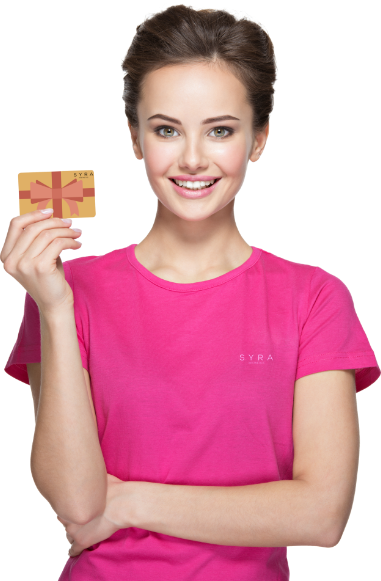Table of Contents
Cheek fillers increase cheek volume and define your cheekbones. Healthcare providers inject fillers into and around your cheeks. The procedure can take anywhere from 15 minutes to two hours. You often see results immediately and recover quickly, though, for some people, some side effects may occur.
Additionally, for those looking to enhance their facial features further, exploring lip flip options in NYC could provide a subtle yet effective way to enhance lip appearance without surgery.
What Is A Cheek Filler?
Cheek filler is a non-surgical cosmetic procedure that gives your cheeks a fuller, more defined look. A healthcare provider injects safe substances called dermal fillers around and above your cheekbones.
Healthcare providers offer many kinds of cheek fillers. Your provider will discuss the best options for you based on your treatment goals.
Cheek fillers usually take less than half an hour to be administered. Depending on the type of filler you are using, the results can last as long as a year or even more. In comparison with other cosmetic procedures, cheek filler injections also bring a few risks with a wide range of benefits, including bleeding and bruising.
What Causes Bruising After Cheek Fillers?
Bruising occurs when blood vessels are punctured by the needle that is used to inject the filler under the skin. Of course, bruising and bleeding should always be expected to a certain extent when getting any type of injectable treatment, be it medical or cosmetic. The reason that lips and tear troughs are so susceptible to bruising is that they are quite vascular, so the veins are harder to avoid.
However, bruising from filler injections is no different from any other type of bruises, such as those from blood tests or immunizations. As with any other, the kind of bruise you get from fillers will usually subside within 5-7 days.
Inherent in any kind of injection is the risk of bruising or swelling – this comes with the territory of putting a sharp needle into the skin. To reduce the chance of bruising, and to contain the bruise, aestheticians at times choose to use a needle called a ‘cannula.’ This is a long, blunt-tipped needle, which is used to create a single entry point at each side of the face. This means that only one injection site is needed, and the bruising may therefore be contained in just one specific area. Additionally, if you’re wondering about how long does Kybella swelling last, it typically varies from person to person, with most experiencing swelling for up to two weeks post-treatment.
How To Prevent Bruising After Cheek Fillers?
Each aesthetician will recommend doing different things to either prevent or reduce bruising. We strongly recommend that patients should follow the recommendations of their aesthetician; it is important that you always take the advice of your own injector. This is because each injector will use a slightly different approach and may even use different products. Their advice will be tailored and personalized to their own technique and product, so it is important to listen to them!
We recommend that you avoid taking blood-thinning medications (such as aspirin) for roughly a week before your injections. Of course, if you are under the direct care and prescription of your GP to take these medications, then you should continue to do so. Blood thinning medications prevent blood from clotting as easily, which can make it easier for you to bruise.
Furthermore, applying Lasonil or Hirudoid creams onto the bruised area can help reduce the intensity of the bruise, and cause it to fade a little quicker. Applying these creams should be done carefully and gently, to avoid disrupting the position of the filler, and prevent the bruising from getting worse. It is up to you to decide if you think Lasonil or Hirudoid will help; both of these can be purchased over the counter!
Our aestheticians at Syra Aesthetics can also give you a cold dressing or ice pack after your injection if they suspect that you will bruise or swell. This causes vaso-constriction, helping to prevent the bruise from bleeding into the tissue, and reducing the overall severity. Ice packs and cold dressings can be applied gently for up to 8 hours post-injection, to have the strongest impact. Additionally, if you’re considering cheek fillers, you may also be curious about how long do cheek fillers last, which typically varies depending on individual metabolism and the type of filler used.
Conclusion
Bruising is a minor side effect, the risk of which accompanies any kind of injection, not just fillers. The good news is that, if you bruise, you can easily cover it up by applying a little bit of makeup to the area. After a few days, the bruising will subside and you will be as though nothing had ever happened – all you’ll have is a fuller, fresher face!
If you have any concerns about bruising, you can always get in touch with our board-certified experts at Syra Aesthetics for a detailed consultation before you are injected. However, just remember that just because bruising can happen, doesn’t mean that it will; furthermore, even if it does, it isn’t something to be worried about.
– Disclaimer –
This blog is for informational & educational purposes only and does not intend to substitute any professional medical advice or consultation.
For any symptoms or medical advice, please consult with your physician, Or Book an appointment with our board-certified aestheticians at Syra Aesthetics.

-
About The Author
Dr. Syra Hanif M.D.Board Certified Primary Care Physician
Dr. Hanif is the Director of Aesthetic Medicine. She is a board-certified physician in Aesthetic Medicine who specializes in using non-surgical alternatives in order to enhance one's appearance through Botox and fillers.
Read More


